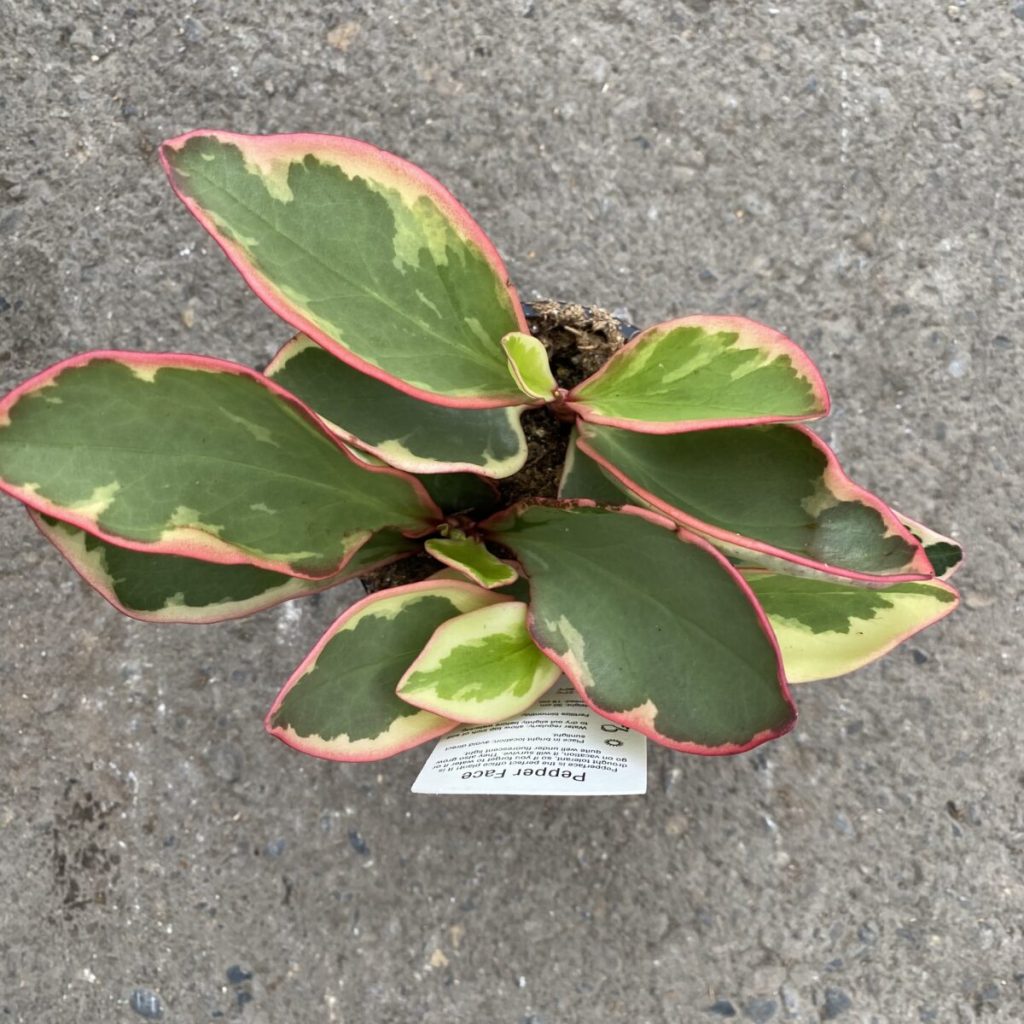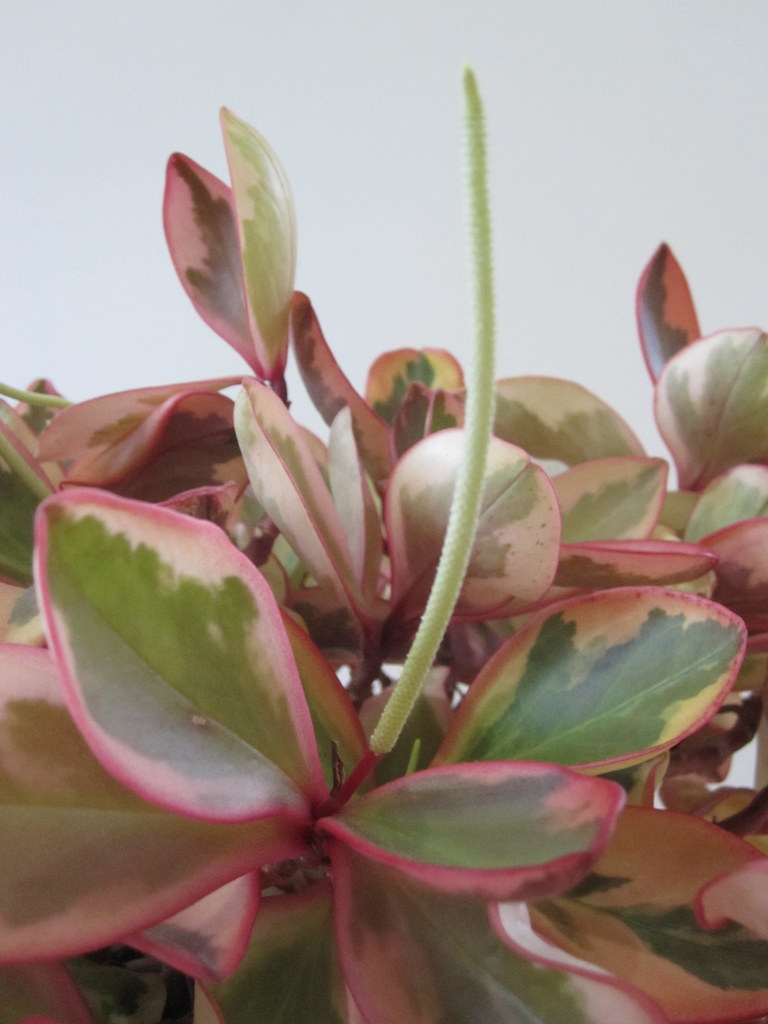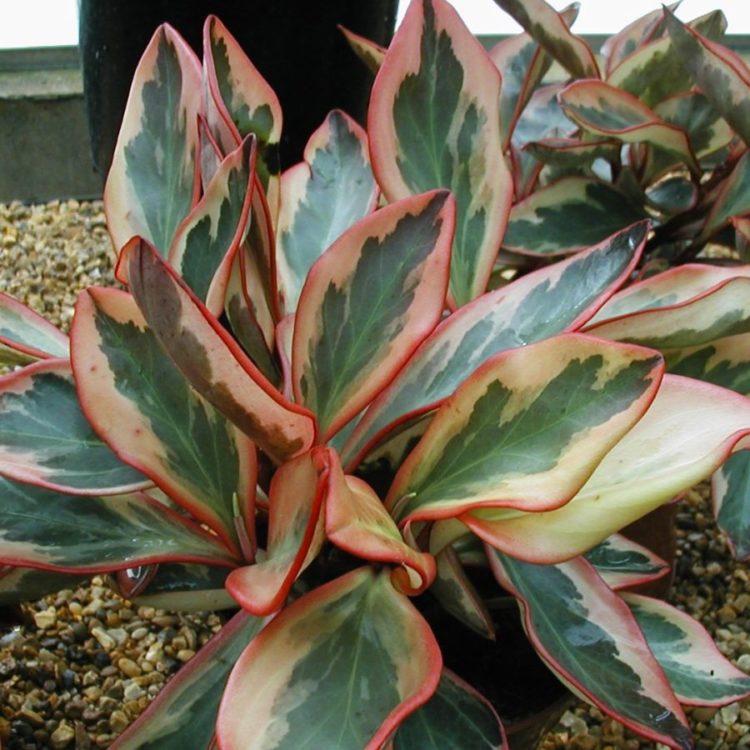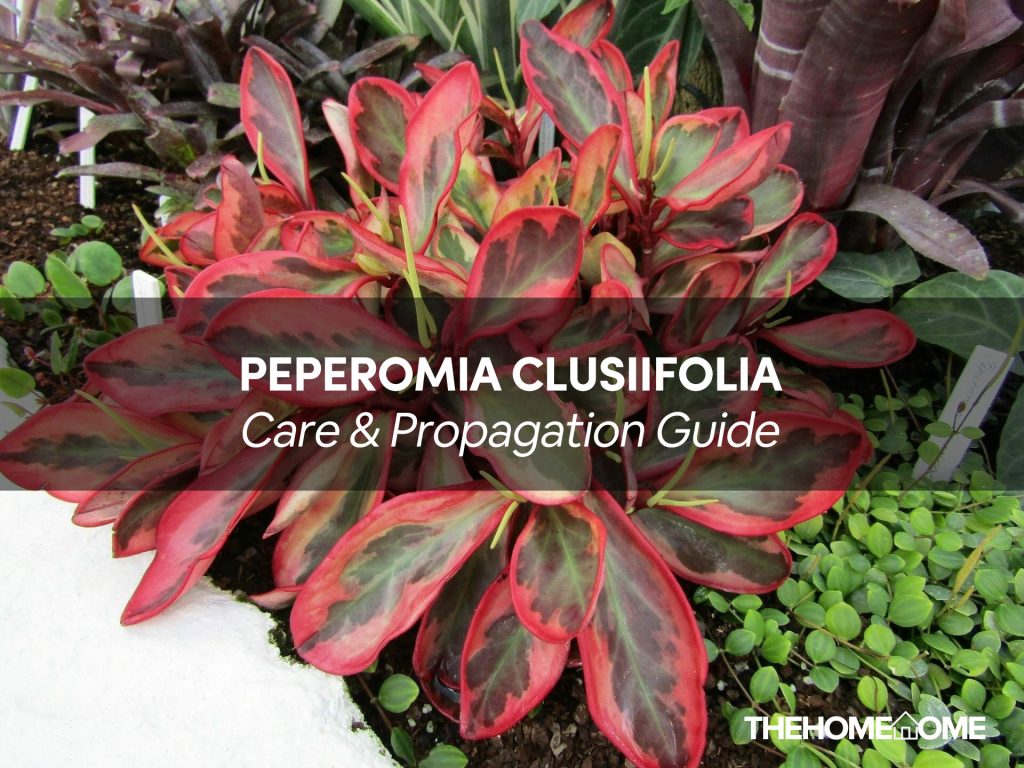There are so many plants in the peperomia family that you could cultivate three from the same family, and they wouldn’t look identical. The peperomia clusiifolia is a member of the peperomia family that has piqued our interest.
This plant, like the rest of the family, has lovely foliage that quickly brightens the room. Apart from their lovely colors, these plants are known to be one of the few varieties that aren’t difficult to care for.
We have you in mind if you’re new to the peperomia family, and we’ve put together this peperomia clusiifolia care and propagation guide to help you enjoy the process.
Peperomia Clusiifolia Explained
The peperomia clusiifolia is also known as the jelly plant is undoubtedly a tropical plant and this is evident in its physical characteristics. The plant is native to Central America and the southern part of Florida; however, it is indigenous to the West Indies and Mexico.
In some places, this plant is sold under the name peperomia tricolor or Ginny peperomia.
The plant can grow to a height of 6 inches at maturity and can be placed in a hanging basket as well as in a pot.
The plant has several nicknames and that is due to one characteristic or another i.e, it is known as red edge because of the red pattern on the border of the leaves, jelly due to its jelly-like leaves.

| Common name | Jelly plant, red edge. |
| Scientific name | Peperomia clusiifolia |
| Plant genus | Peperomia |
| Plant type | Herbaceous perennial |
| Height | 6 inches |
| Light | Bright, indirect light. |
| Temperature | 65 to 85 degrees F |
| Water | Moderately watered. |
| Soil type | Well-draining soil |
| Toxicity | Non-toxic |
| Native | to Central America and the southern part of Florida |
Peperomia Clusiifolia Propagation
Propagating the clusiifolia is as easy as propagating the rest of the peperomia family. The easiest ways to propagate the clusiifolia are leaf and stem cutting. Here are steps to have a successful propagation.
Needs For Propagation
- Healthy and mature clusiifolia plant
- Sharp and sterilized knife or scissors
- Rooting hormones
- Potting soil
- Pot
- Water.
1. Leaf-Cutting
- Cut out one or two leaves from the mother plant. Ensure that your leaves have attached to it about 1 to 2 inches of the stem. There is no end to the number of leaves you can cut, you can cut as many as you will like to propagate.
- Let the tip of the stem dry out and then dip it in a rooting hormone to help boost the rooting process.
- Prepare your ideal potting soil and place the plant into the soil. water it and cover it with a plastic bag, this is to imitate the setting and effect of a greenhouse.
- Place the cutting where it can get adequate bright, indirect sunlight to increase photosynthesis.
- Open up the plastic bag once a week, to prevent the roots of the cutting from rotting.
- In 7 to 8 weeks, your cutting will begin to sprout new roots and plants. You can then replant when you find the roots strong enough.
2. Stem Cutting
- Cut out a stem from the mother plant; ensure that the stem has up to 5 leaves on it. Remove the lower leaves, leaving only the ones on top.
- Dip the tip of the stem in some rooting hormone powders.
- Prepare your potting soil and make a hole in it. Place your stem cutting into the hole and keep the surrounding firm with your hands.
- Thoroughly water the plant and place it in bright, indirect light.
Peperomia Clusiifolia Care Guide
Although caring for peperomia plants like the clusiifolia isn’t as difficult, many people do too much or too little, which is where the difficulty arises. Balance is important to clusiifolia, and it requires it when it is being cared for.
This clusiifolia care guide will show you how to feed your plant what it requires at the right time.

1. Light
Your peperomia clusiifolia will thrive best in moderate to bright indirect light. Problems will arise when your plant is placed in either bright direct light or low light. Direct light on your plant will make it lose its moisture faster, causing dehydration.
Direct light will also burn your plant leaves and cause yellowing. Although your clusiifolia can tolerate low light conditions, it will not develop flowers and experience stunted growth in all aspects.
Placing your plant in the morning sun will provide the right amount of light it needs. No natural light? Not to worry, your plant can do well under artificial fluorescent light.
2. Water
Like the rest of its family, imbalanced watering is the beginning of many problems for your peperomia clusiifolia. The plant does not like to be watered too much, some diseases can infest your plant if water is found to be on the high side.
To give your plant the best of watering, ensure that the soil becomes dry before you water again, you can check this with your finger or a stick. A more accurate way to find out the level of water in the soil is with the use of a moisture probe.
While your plant will not tolerate overwatering, it will also not tolerate under-watering. Your plant should be watered when it is noticed that it needs water.
3. Soil
Due to the peperomia clusiifolia’s dislike for soggy soil, this plant should be grown in well-drained soil. We suggest that you make a mix of the right materials to give your plant the right soil required. A mixture of cactus soil, perlite, and sand will give your plant the right ground to grow on.
We advise that the soil is nutrient-filled; this will reduce the need for chemical fertilizer and help your plant grow well. An addition of compost while preparing your soil will do just fine.
4. Humidity
The right level of humidity for your clusiifolia ranges from medium to high. This is good and is an indication that the humidity in most homes is right for your plant. However, if you live in a hot climate, we suggest you seek alternative measures in providing humidity for your plant.
An example of this is purchasing a humidifier for your plant, and placing your plant on a pebble tray, when the water in the pebble tray raises, the humidity around the plant rises as well.
4. Temperature
The temperature of the environment where your clusiifolia is grown is quite important. The clusiifolia enjoys growing in warm climate settings and can survive an extreme one, as long as the humidity level is matching up. Ensure that your plant is kept from drought and AC or any heater.
The ideal temperature for your peperomia clusiifolia is however 64 to 75 degrees F. your plant should not be placed at any temperature that is lower than 5o degrees F as it will develop growth issues and becomes susceptible to diseases this way.

5. Fertilizer
The peperomia clusiifolia will experience its natural growth without the additional help of fertilizer; however, a little help will do your plant no harm.
While you feed your plant fertilizer, you have to exercise caution as too much fertilizer can destroy the leaves and lead to the death of your plant.
We recommend the use of organic fertilizers such as compost; however, you can also make use of water-soluble fertilizer but only use this once a month during the growing months. Ensure to make use of a fertilizer with a nutrient ratio of 10-10-10. We advise against fertilizing during the winter.
Peperomia Clusiifolia Growing Tips
- If your clusiifolia plant begins to turn black or droop, then you are watering too much.
- Repotting your plant may not be necessary as this plant has small roots and tend to not become too big until after some years.
- Instead of changing your plant’s pot, we suggest that you change its soil. Most soils lose their nutrients after one year; a change of soil allows your plant to feed on fresh nutrients.
- If you find your plant’s root shooting out of the drainage hole, purchase a pot that is 1 inch bigger than the present one and re-pot in there.
- Your clusiifolia will appreciate pruning once in a while. Ensure to get rid of dead and damaged leaves, this will help the plant stay neat and healthy.
- Watering your clusiifolia is good, however, too much of it is damaging to your plant.
- Your plant will appreciate a little misting and cleaning, especially with insecticidal soap, it helps keep the insects and bugs away.
Peperomia Clusiifolia FAQs
Peperomia Clusiifolia plant parent? We’ve created this section to further answer your burning questions.
Is Peperomia Clusiifolia Toxic?
Is The Peperomia Clusiifolia Easy To Care For?
Why Are My Peperomia Clusiifolia Leaves Wilting?
Final Thoughts
Peperomia clusiifolia is one of the most amusing plants in the peperomia family. Like the rest of its family, it is easy to care for and poses no threat to the health of your family.
If anything, clusiifolia contributes to the beauty of your home, when placed there. It can be planted in a pot and in hanging baskets.
More houseplant guides:
